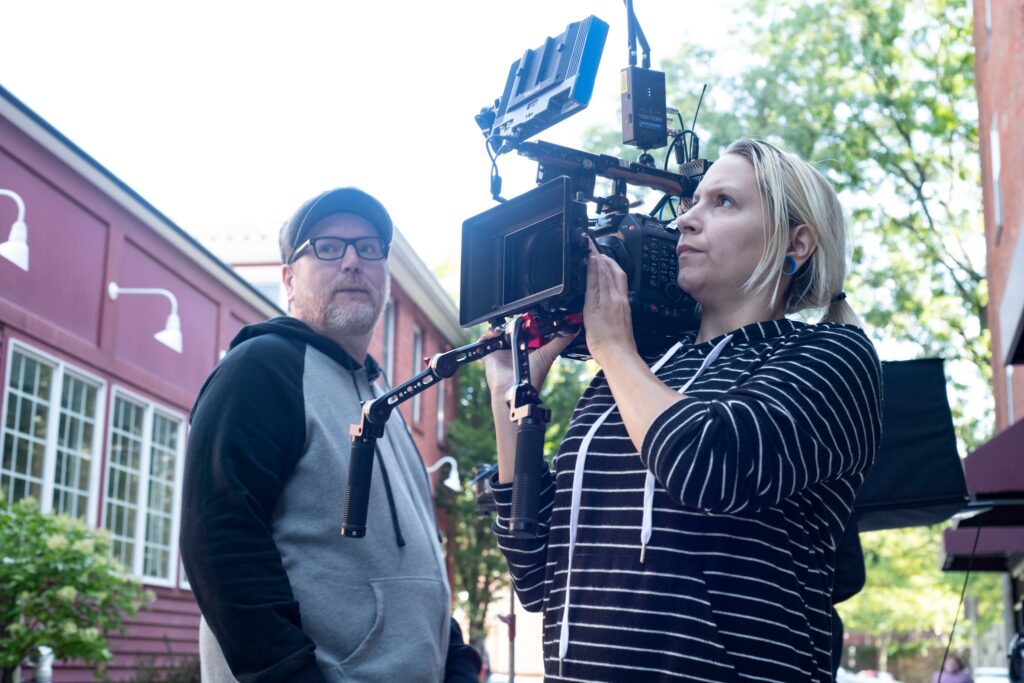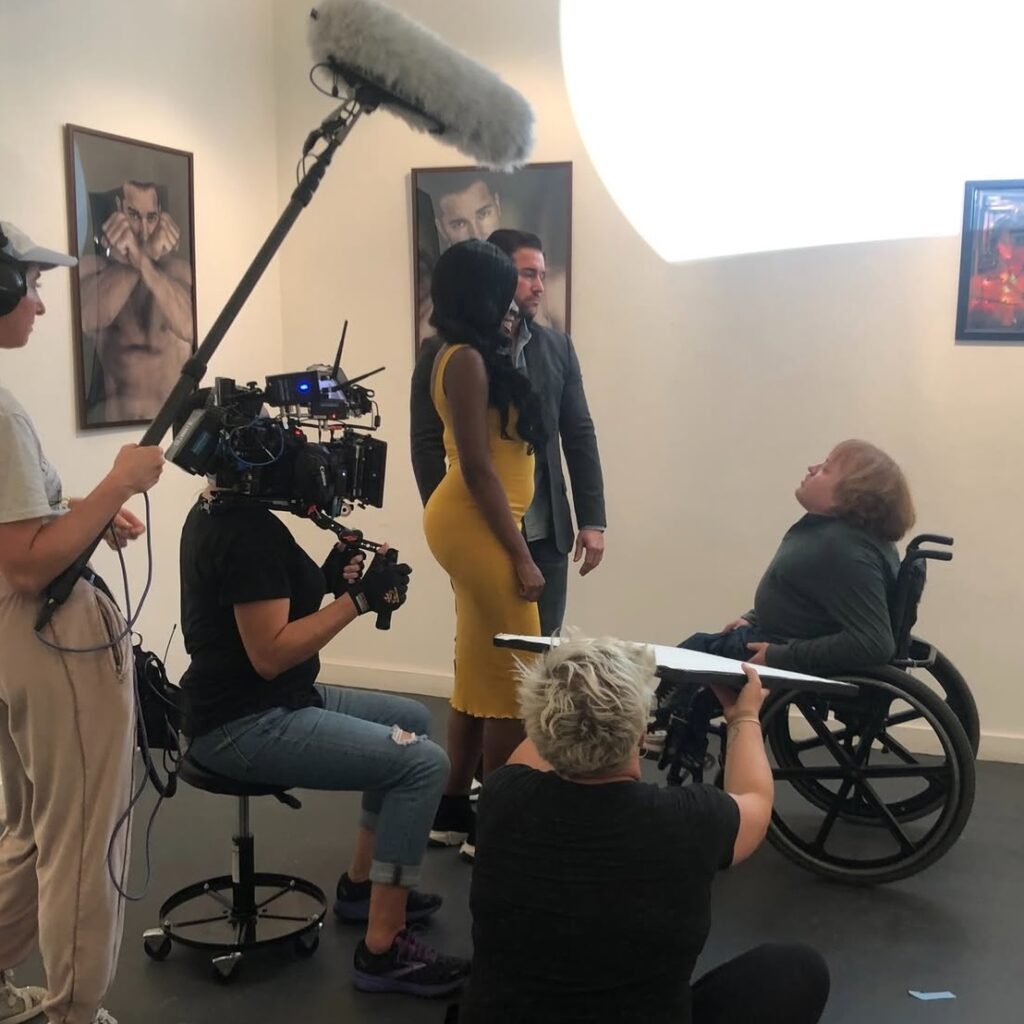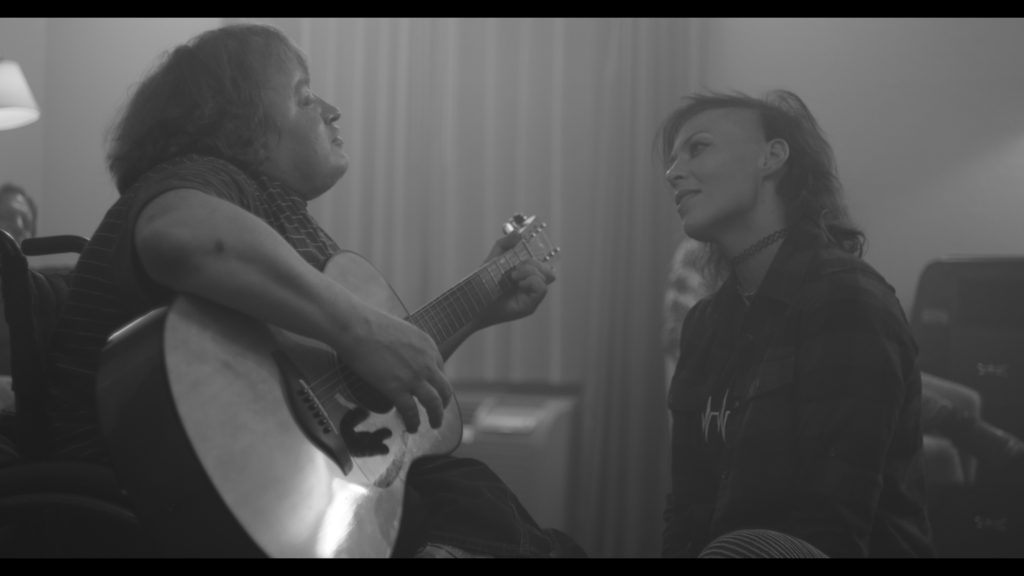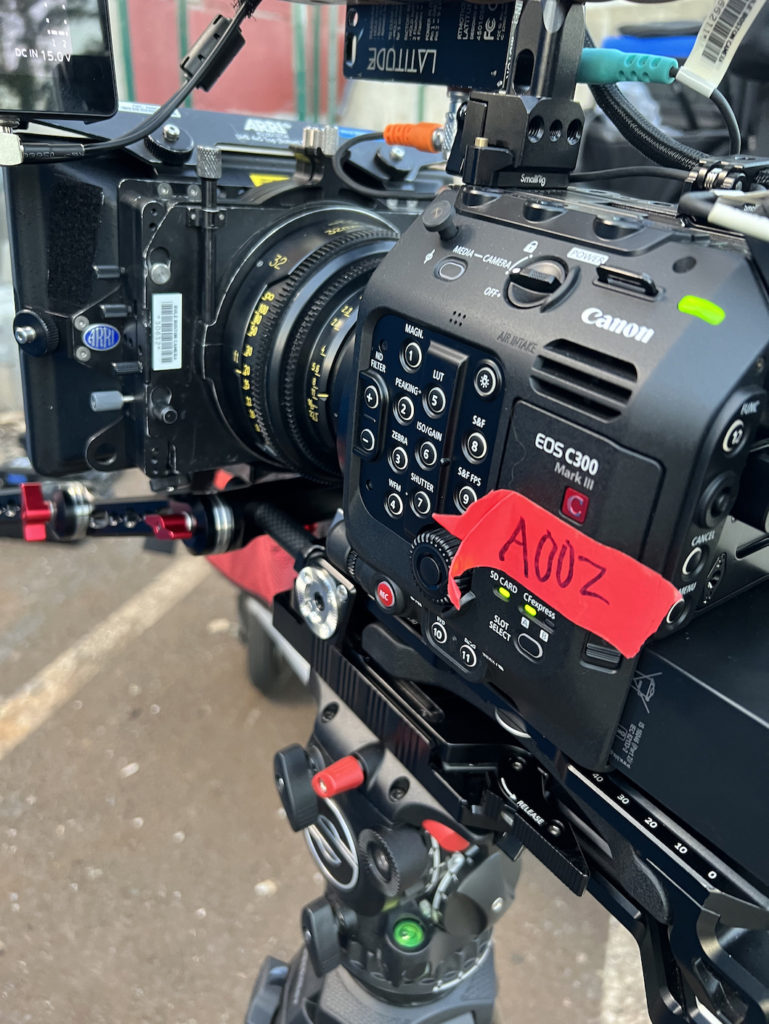03 Nov Tallywacker Cinematography
Let’s take a quick peek at the cinematography of the movie Tallywacker. According to director Brendan Boogie, “Tallywacker is a buddy comedy about 2 bandmates whose relationship gets tested when one of them gets a gig touring with a major rock star. Our film has a lead character with a disability that doesn’t define him. There’s no pity, false heroism or “othering”. This story is real, human, and it’s funny!”
Shooting in Black and White
Director Brendan Boogie came up with the idea of shooting in black and white after we filmed the short proof of concept. After some thought, I got on board with the idea. Previously I had only shot b&w on film, never digital. I did some research and created a LUT in DaVinci Resolve. I quickly loaded it into the Canon C300mk3 and turned on the LUT output to the viewfinder and SDI. We viewed the LUT on all of our monitors throughout the shoot. At first, it was a bit odd, but my eye quickly adapted. I started thinking more about contrast and texture and completely ignored color. It was a fun experiment and took me back to film school. I recalled the Zone System and Ansel Adams. My goal for each frame was to capture a range of tones from pure black to pure white.
Camera Build
Brendan and I wanted the camera work to have a natural style with movement motivated by the actors. We opted for my Canon C300mk3 kitted with a Smallrig Shoulder Mount, Canon PL mount, vintage TLS Cooke Speed Panchro Lenses, RT Motion Focus System, Teradek, Indie 7 onboard monitor., and Wooden Camera battery plate. 1st AC Sam Gove perfected the build – it was compact and perfectly balanced. The entire rig was versatile and allowed me to adapt quickly to any shooting situation. Although the film is almost entirely handheld, sometimes I shot from the hip using a Hipshot. I also employed a butt dolly from time to time in order to move quickly and stay low.
Lighting
Gaffer Rowan Lupton created lighting setups that embraced the available light in each location and added LED fixtures to create separation between the characters and the backgrounds. We added atmosphere to many scenes, especially the music venues, where we used directional light motivated by the stage lighting.






